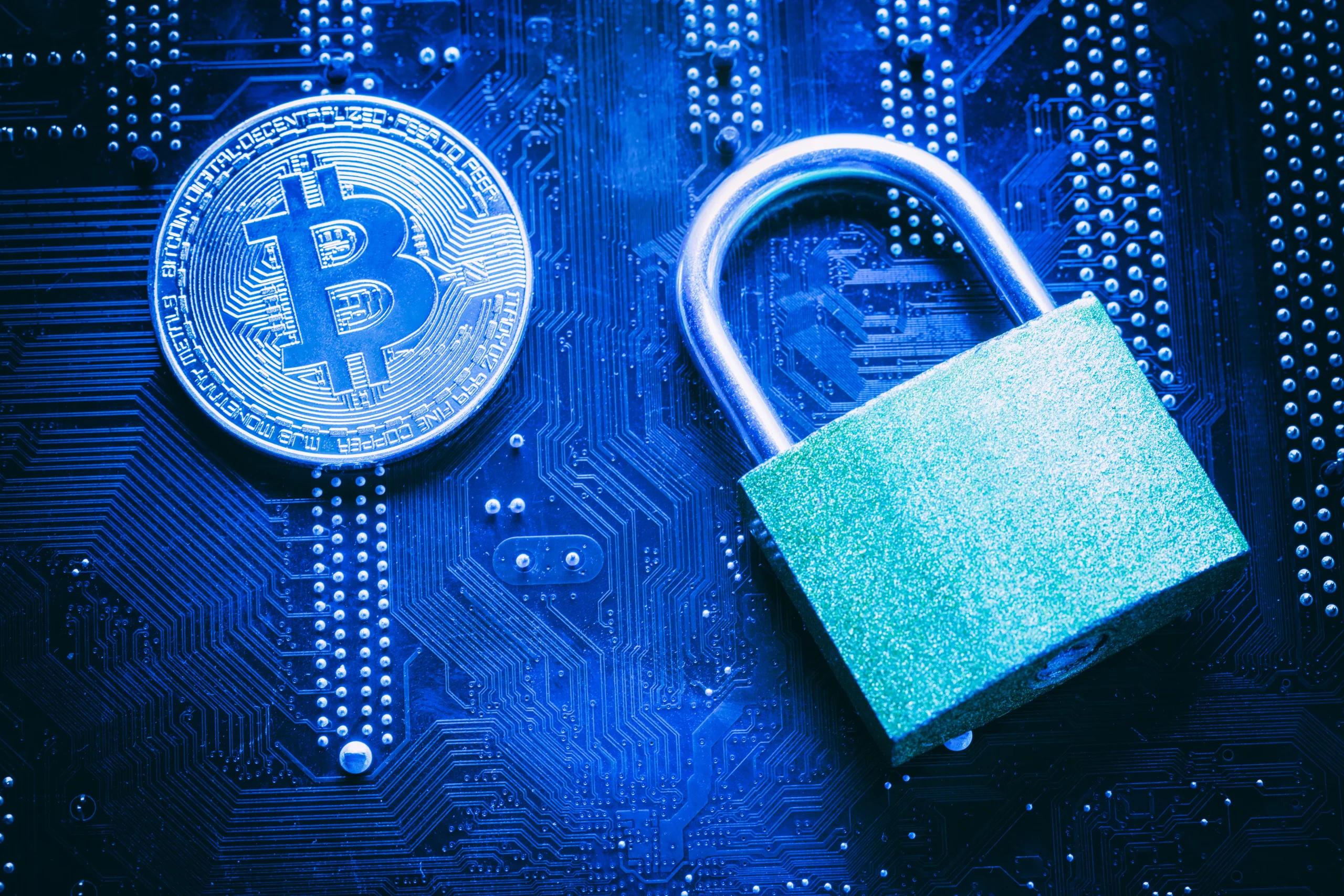Best Practices for Cryptocurrency Security and Privacy
The best practices for cryptocurrency security and privacy are – 1. Using Strong Passwords, 2. encrypting your wallet and private keys

As the industry continues to grow, cryptocurrency security and privacy have become more important thAs the industry continues to grow, cryptocurrency security and privacy have become more important than ever. Whether it’s phishing scams or exchange hacks, all crypto users are facing constant threats, which may lead to significant financial losses. So, if you’re not taking proper precautions, your funds and personal data can easily get compromised and fall into wrong hands.
One pressing problem in this regard could be crypto privacy protection. Contrary to traditional banks, public ledgers keep records of all cryptocurrency transactions – which, in turn, makes them traceable. While this is great for maintaining transparency, it also leaves your data vulnerable to risks such as –
- Financial surveillance
- Identity tracking
Another fundamental concern could be the storage where you’re keeping your cryptocurrency. If you store your digital asset on a poorly protected (e.g., no 2FA encryption) wallet or an exchange, your crypto would be vulnerable to theft.
So, the question is – how will you find secure cryptocurrency storage and avoid putting your privacy in jeopardy? We have answered all your questions in our guide.
1: Understanding the Need for Cryptocurrency Security and Privacy
The rapid rise of cryptocurrencies, especially since November 2013, has made it an appealing target for cybercriminals. The Poly Network hack is a notable example of this – where the hacker stole almost $600 million from the decentralized platform.

Source – X
Risks of this kind can pose a serious challenge to everyone investing in the crypto space. So, even if you are just another casual trader, it’ll be important to learn more about these threats beforehand.
Risk – 1: Hacking and Fraudulent Schemes
Cybercriminals use various methods, such as ransomware and malware, to gain unauthorized access to user wallets and crypto exchanges. Once inside, they can drain your funds quickly, leaving you with little recourse. Also, fraudulent schemes like fake ICOs (initial coin offerings) or Ponzi schemes can also lure investors into handing over their hard-earned money.
Risk – 2: The Myth of Transparency in Blockchain
The transparency level on blockchain technology is certainly revolutionary. However, there are still some privacy concerns. For example, every transaction you make will be recorded in a public ledger. So, you can trace the movement of your funds.
The bad part is, without proper crypto privacy protection, your financial activities can be tracked! This might lead to unwanted surveillance or potential identity theft.
Note: At the beginner level, it’ll be important to use secure wallets, keep your crypto trading app up-to-date, and integrate two-factor authentication to protect your funds and privacy.
From a broader perspective, you may also have to understand the risks of different storage options (hot & cold) and make your choice accordingly.
2: Using Strong and Unique Passwords for Wallets
Passwords are the initial line of defense for your secure cryptocurrency storage. Using weak codes, such as your name or phone number, can be susceptible to techniques like credential stuffing and brute-force attacks. So, you have to create a password that –
- Is long, complex, and unique
- Has a mix of numbers, uppercase-lowercase letters, and special characters (e.g., @, #, $, etc.)
It’s also advisable to keep changing your password at least once every month.
Tip: If it’s becoming too difficult to keep track of your codes, you can also use a password manager to create and store strong passwords.
3: Implementing Two-Factor Authentication

An Example of 2FA (Source – Akamai)
Two-factor authentication improves cryptocurrency security and privacy by adding an extra layer of protection. To get through it, you’ll have to verify your identity through another form of authentication apart from your password. These may include but are not limited to –
- TOTP or time-based one-time password
- HOTP or HMAC-based one-time password
- Biometric authentication (entering your account will require your fingerprint or facial scan)
- SMS 2FA (an OTP will be sent to your mobile number)
- Push-based 2FA (a push notification will be sent on your phone to verify your identity)
Note: Among the types of 2FA methods, hardware keys and authenticator apps offer the highest level of safety, especially for secure crypto transactions. SMS-based two-factor authentication might be vulnerable to SIM-swapping attacks.
4: Encrypting Your Wallet and Private Keys
Crypto wallet encryption works by scrambling your wallet data – which makes it unreadable for another user who doesn’t have the correct decryption key.
A private key, on the other hand, works as a password to access your digital assets. So, if someone gets hold of it, they’ll have complete control over your funds.
However, you can prevent this from happening by simply storing your private keys offline in encrypted formats, such as –
- Hardware wallets
- Password-protected storage solutions
Writing them down on a piece of paper and keeping those in a secure place can also ensure that they aren’t getting exposed to online threats.
Note: Many software wallets offer an in-built encryption feature, which allows users to set up a unique passcode. So, even if a hacker breaks into your system, they can’t access your account without this new encryption key. Multi-signature wallets can improve your digital asset security even more, as they require multiple approvals before a transaction is processed.
5: Using Cold Storage for Long-Term Security
Cold wallets are usually considered to be the gold standard for secure cryptocurrency storage. Contrary to hot storage (these remain connected to the internet), these wallets can store your cryptocurrencies offline. So, they are virtually immune to phishing scams, hacking attempts, and malware. Some examples of cold storage are – Ledger and Trezor.
Apart from offering additional security, cold storage can also improve crypto privacy protection by reducing your digital footprint. As you are keeping your assets offline, it becomes difficult for third parties to track your holdings – which is perfect for maintaining anonymity.
Note: While cold storage is perfect in terms of security, you cannot take your currencies out of it whenever you please – due to it being not connected to the internet all the time. So, if you are considering trading regularly, it’s better to keep a small amount of digital assets in a hot wallet.
6: Avoiding Malicious Links and Phishing Scams

Example of a Phishing Email (Source – Imperva)
Unlike brute-force techniques, phishing scams are quite tricky to avoid. In this aspect, cybercriminals often pose as a legitimate organization, wallet provider, or even as a member of a crypto exchange & send fake emails containing malicious links.
These scams try to exploit a sense of urgency and fear in the user by claiming that – for example, their account was compromised, and they have to verify their wallet immediately. This prompts most people to visit the malicious link and reveal sensitive information like –
- Login credentials
- Private keys
- Seed phrases
Tip: You can avoid phishing scams by ignoring or being skeptical of unsolicited emails, websites, or messages asking for personal details. If you are unsure about what to do, manually enter the website URL on your browser and check if the claim made by the mail is legitimate or not. Using security features like two-factor authentication or hardware wallets can also be helpful.
7: Conducting Secure Transactions on Crypto Exchanges
Exchanges are and will always be the primary target for hackers – so, taking extra precautions with your assets and personal data will be essential. For example –
- Verify the legitimacy of the crypto exchange you’re using
- Enable two-factor authentication on your digital wallet
- Keep the larger portion of your digital asset in cold storage
- Use a VPN to mask your location data
- Keep regular backups of your transaction data
Note: When choosing a crypto exchange platform, always opt for a well-known/popular option, like Binance or Kraken.
Check the URL before logging in, as scammers often create lookalike websites with minute spelling differences to trick users. You can bookmark the original website too, to avoid these risks.
Summing it Up
By following these cryptocurrency protection tips, you can significantly reduce your risk of getting involved with phishing scams and authentication-related issues. Also, if you are more focused on keeping your digital assets secure, using cold storage should be your go-to option.
As we all know, the world of crypto is filled with risky ventures and the utmost volatility. So, apart from ensuring cryptocurrency security and privacy, you should also be mindful of the investments you are making. Don’t go overboard with your money – even when you are earning more than you’d expected.
Follow us on Google News
Get the latest crypto insights and updates.


